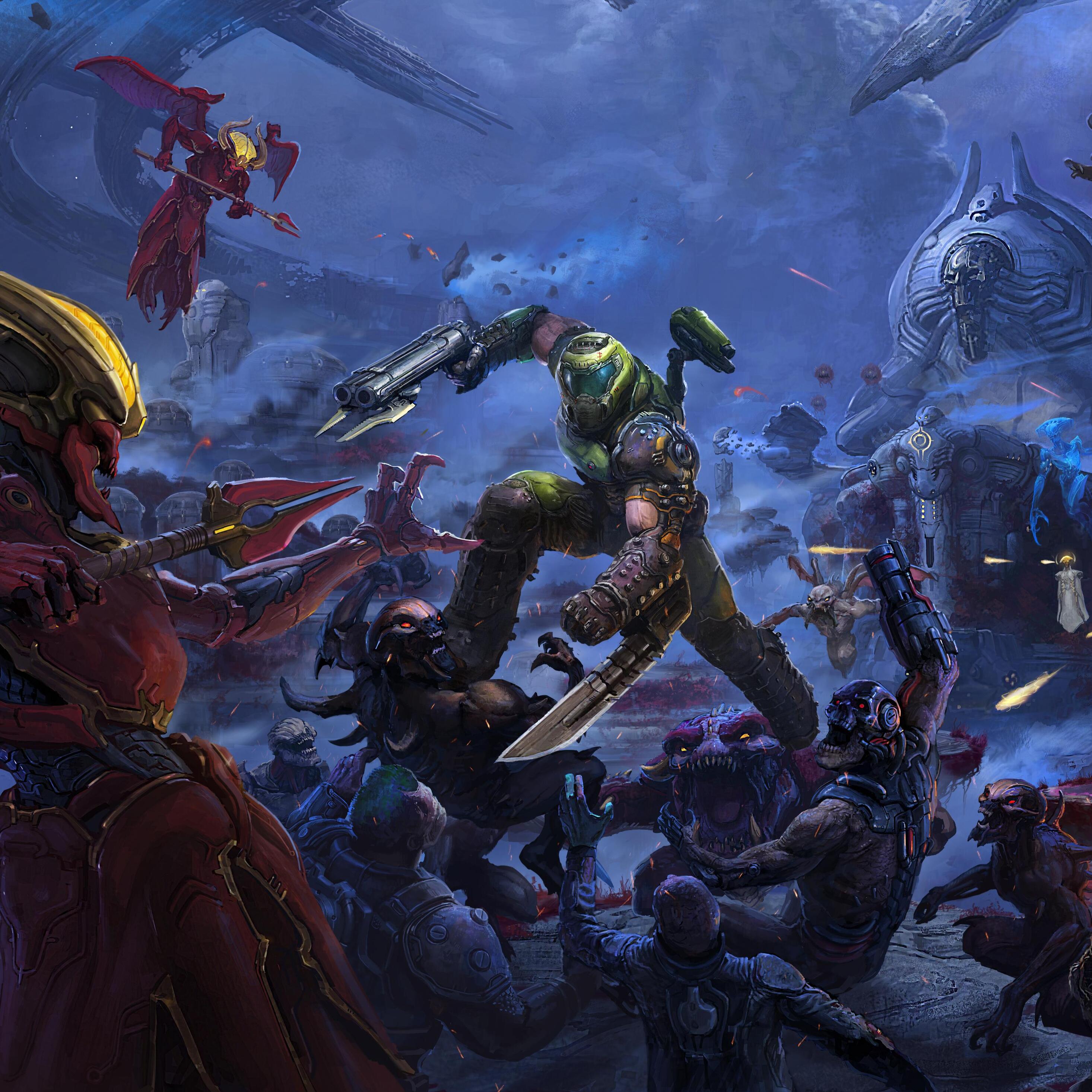
The Curse can only be removed by either killing the Prowler or with a Blood Punch, which is tricky given the Prowler’s tendency to teleport across the map. In Eternal means he might as well remove your legs entirely. If the Cursed Prowler hits you, this removes your ability to dash (among other effects).

My favourite new enemy, however, is the cursed Prowler, and he’s my favourite because he’s the one new demon I always feared turning up. Examples include the Stone Imp, which is invulnerable to almost all attacks but weak to the shotgun’s auto-fire, and the Armoured Baron, who requires either precision shooting or deft use of the Plasma Rifle to strip him of his metal carapace. Whereas TAG Part One either threw huge amounts of demons at you or placed them in spaces inappropriate for fighting them (such as locking you in a narrow corridor with a Titan), Part Two introduces several tougher variants of existing demons, then uses them to make encounters more interesting. The Escalation encounters encapsulate Eternal’s smarter approach to challenge. These offer two challenging demon battles, the second of which is considerably harder than the first, but also completely optional, offering a cosmetic reward if you complete it. Whereas Eternal’s Slayer Gates and Secret Encounters carried over into TAG Part One, in Part Two these are replaced with a single new encounter type, known as Escalation encounters. The trade-off for this greater visual splendour is that levels are slightly smaller and more focussed than Part One, with fewer secrets and other distractions to discover on the map. Reclaimed Earth, for example, shows us the fruits of the Slayer’s labours, as the planet gradually patches itself together thanks to his intervention in its destruction. The first two levels in particular stray away from the apocalyptic vision showcased by Eternal, offering more verdant, more optimistic landscapes for you to stage bloody demon murder in. Yet while the general locations are familiar, Part Two’s environmental trinity is starkly different from the locations seen in Eternal before.

But it makes up for this by being better paced, more technically challenging, and having a (mostly) fantastic sense of occasion.Īs with Part One, TAG: Part Two offers three more large, encounter-heavy levels – one set on Earth, one set in Hell, and one set in the composite of realms comprising Eternal’s de-Christianised version of Heaven. Compared to TAG Part One, Part Two is less breathlessly punishing. Having properly grasped this in my second run, I felt much better equipped to appreciate the design decisions of The Ancient Gods Part 2, which caps off the Doom Slayer’s celestial rampage with one final realm-hopping journey to a confrontation with The Dark Lord himself. Second, it wants you to not only stand up to that challenge, but to absolutely monster it, to carve your way through even the toughest demonic onslaught as if you were walking to the shop to buy chips. First, it wants to offer a genuine challenge, for your victories to feel earned.

Like Sekiro: Shadows Die Twice, Doom Eternal wants you to play it in a specific way, and the reason it wants you to do that it twofold.

All the stuff that bugged me about it when I first played it – the specific tactics for fighting demons, the platforming sequences, even the overly detailed story, all flow much better when you fully grasp what it is the game is trying to achieve.
#Doom eternal the ancient gods how to#
While doing this, I realised that once you understand exactly how to play it, Doom Eternal is a spellbinding experience from the very beginning. Prior to playing The Ancient Gods Part 2, I decided to run through the original game and that first bit of DLC again, to get an idea of how the whole experience flows together. I just didn’t have the capacity to recognise this when I first reviewed it. I’ve since realised this isn’t quite true. When I reviewed Part One of Doom Eternal’s Ancient Gods DLC, I said that its ferocious test of the player’s FPS skill retroactively improved the original game.


 0 kommentar(er)
0 kommentar(er)
